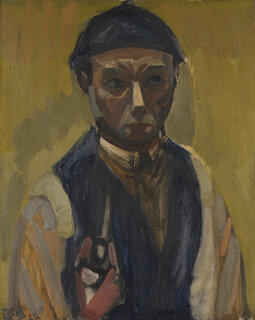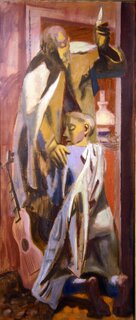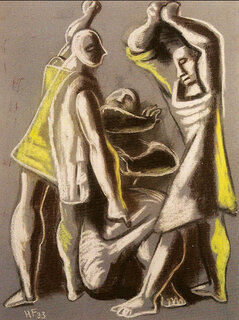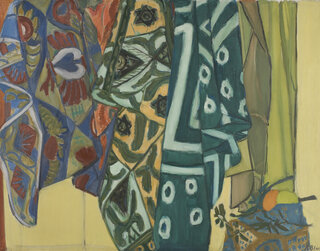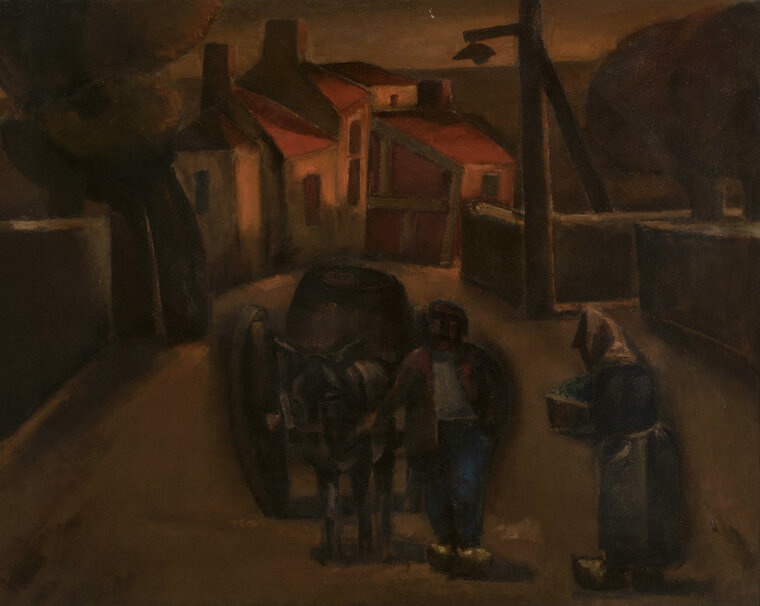
© Josef Herman estate
In his autobiography, "Related Twilights: Notes from an Artist’s Diary", Herman relates how he came upon la Rochepot by chance while travelling through Burgundy in east-central France: 'There were hills, all pink and red, tall with golden leaves in autumnal splendour ', he recalled. 'Along the road came a procession of ultramarine carts each pulled by a giant of a horse and followed by a peasant couple, the man dressed in faded blue – almost lilac – and the woman covered from head to foot in black. […] It was a fortnight of bright autumn days, and nights lit by a red moon. Just to walk in this magnificence was sheer enchantment, and afterwards to draw the things I saw was an added joy'.
The Road to La Rochepot contains the classic elements of a Herman composition: a twilight setting and palette blending urban and rural elements with stoic peasant figures at its heart. For Herman the peasant was: a type, ‘but also an individual’, through whose bodies could be expressed a ‘kind of transcendental declaration of human independence’. In the 1950s Herman was championed by the Marxist critic John Berger as a painter of ‘ordinary lives’, whose work was socially relevant and accessible to all, seen and understood by those outside of the art establishment and art institutions, particularly the working class.
